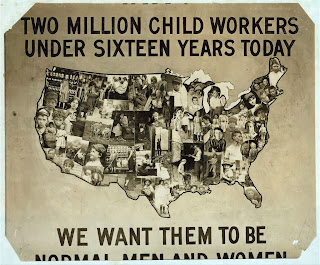Children are such a crucial part of this world. They not only are the future of our country, but they bring joy and light into everyday. Before the Fair Labor Standards Act was developed in 1938, children were allowed to work in unfit conditions at young ages without any protection from the government. According to Todd Postol, in 1900 there were over 1.7 million child laborers in the United States, which did not even include children under the age of 10. "In New York state alone, one scholar has estimated, 400,000 children between the ages of 5 and 18 were in the labor force" (pg 349, Postol). If children are truely the ones that bring sunshine to our lives everyday, then how did the US government allow for such mistreatment of our children?
Because minimum wage was enacted for all industries in the United States and children were now restricted on working, many people lost jobs and opportunities. Although the changes to child labor in the US was beneficial in many ways, children were a primary form of income for families at that time, so families no longer had as steady of an income. The people that were affected the most from the FLSA were "...namely blacks, females, younger workers, and workers living in rural farm areas" (pg 23, Kau). Many people lost their jobs because their companies could not afford the new minimum wage for all of their workers.
In the United States today, many people are still marginalized in the workforce because of their race and age. During the era of the development of the Fair Labor Standards Act, Americans working in agricultural industries, who were primarily black, were not necessarily protected under the legislation of the new child labor laws. Today in America, black Americans are often not given the same opportunities for health protection under the United States government because of the many underlying structural divisions in our economy. The effects of the FLSA are still very apparent today, and resurface in many different ways.



No comments:
Post a Comment